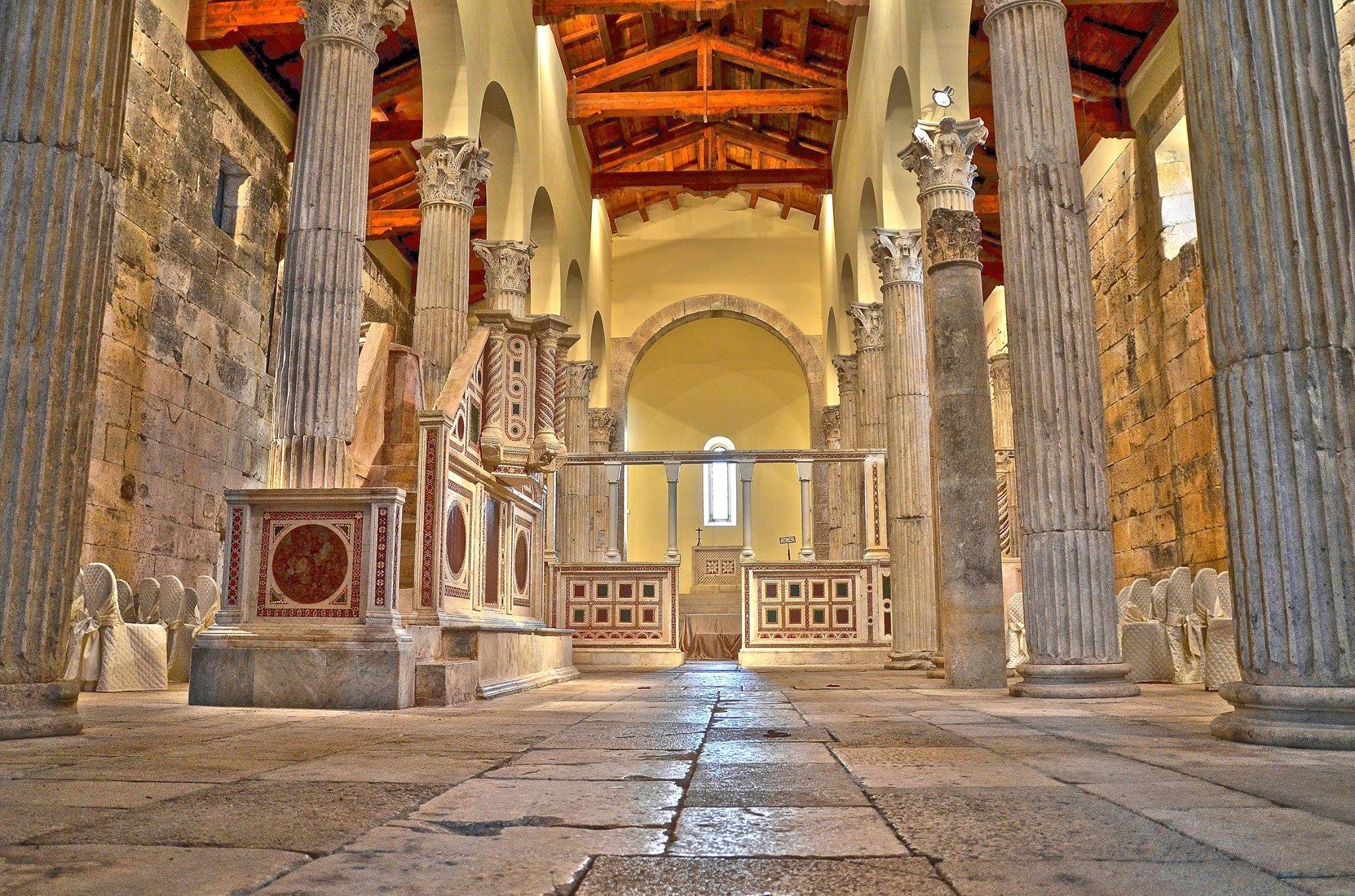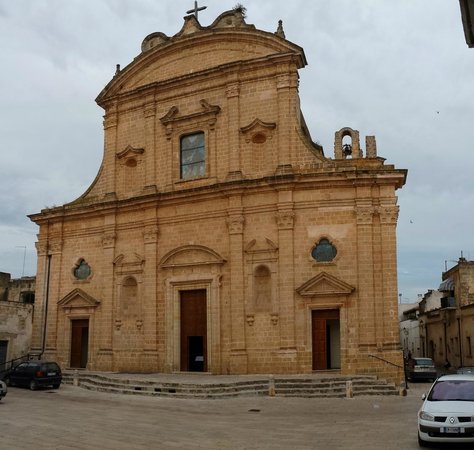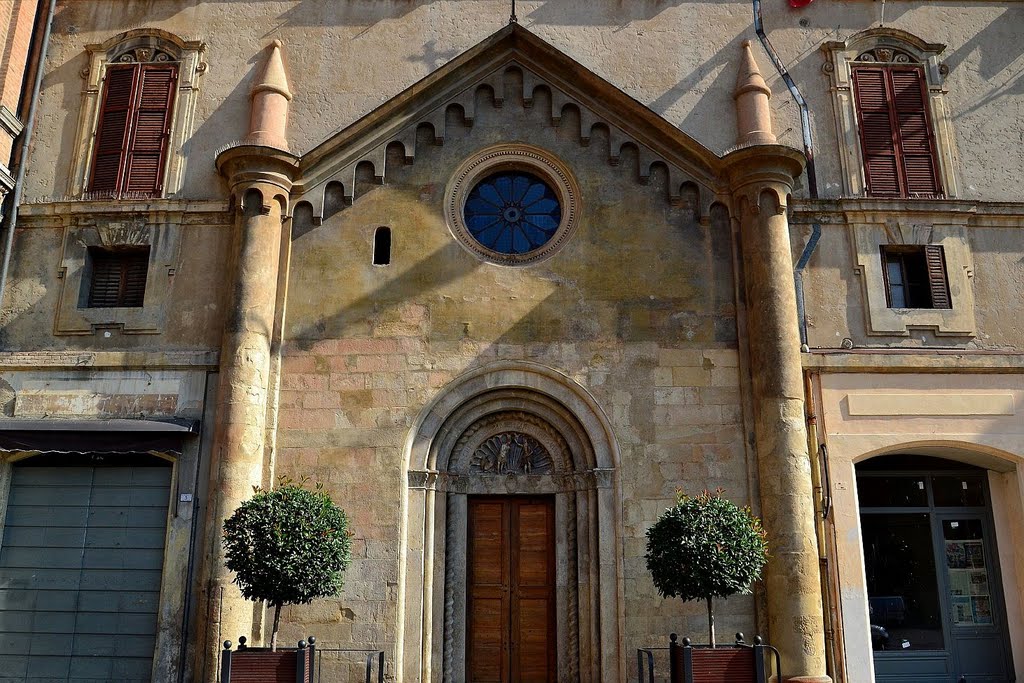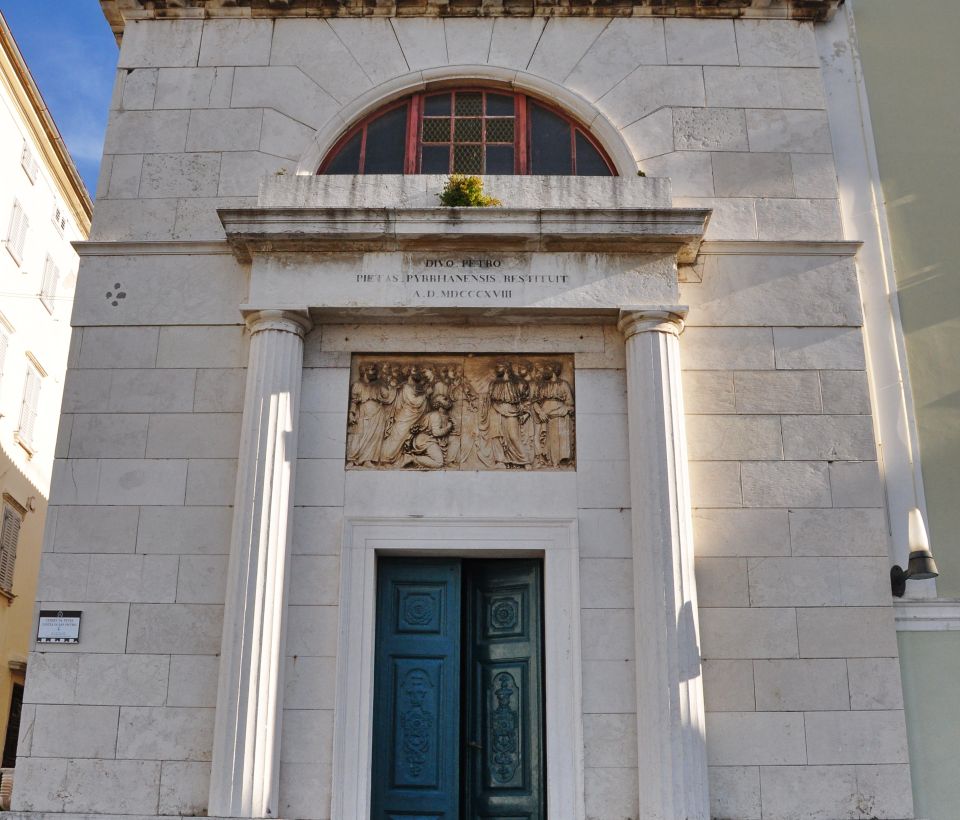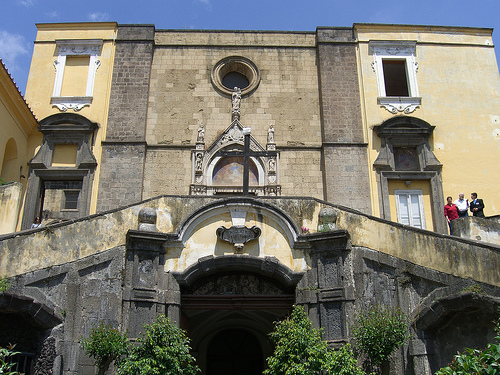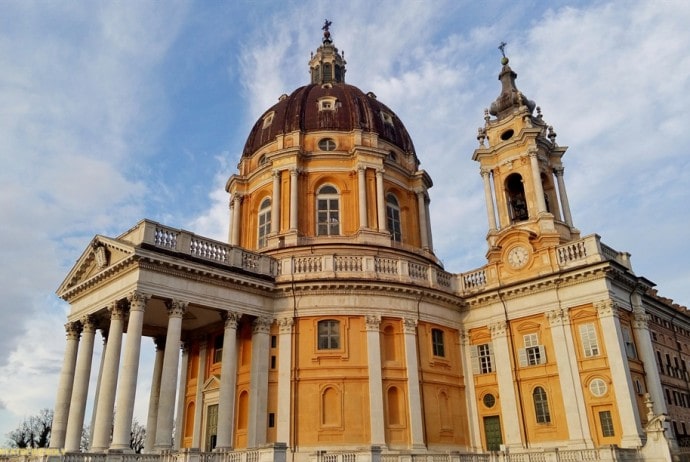The church of San Pietro in Albe stands on the hill of San Pietro, one of the three hills surrounding Alba Fucens, the Roman city founded in 304 B.C. at the foot of Mount Velino, near the ancient lake of Fucino. The first evidence of the presence of this place of Christian worship dates back to the middle of the 6th century A.D., when the Roman temple of Apollo, dating back to the 3rd century B.C., was converted into a church. The temple, of which three sides are preserved, originally had a portico with four columns. There are faint traces of the early Christian phase, including fragments of reliefs exhibited in the Museum of Sacred Art of Marsica, in Celano (AQ). In the 12th century the back wall was partially demolished to create the apse and the crypt below, the interior space was divided into three naves and the walls of the long sides were extended beyond the colonnade of the Roman temple, incorporating the side columns of the ancient portico. At the centre of the new façade a bell tower was erected, which still serves as an unusual access to the church. Between the 13th and 18th centuries, the church underwent continuous restoration and remodeling. In 1915 a violent earthquake caused considerable damage to the whole building, whose restoration was carried out in the period 1955-1957 and involved the consolidation of the load-bearing structures through the insertion of a reinforced concrete frame. Since 2014, the church has been entrusted to the Abruzzo Museum Pole. Outside, visitors can immediately notice the different type and quality of the materials that make up the masonry of the long sides of the church, i.e. large square blocks of limestone – part of the original Roman temple – and small, barely hewn stones used to extend the ancient walls during the 12th century.Once past the entrance portal to the church – which was closed by magnificently carved wooden doors, now on display in the aforementioned museum in Celano – the view of the suggestive interior is immediately attracted by the 13th century ambo and iconostasis, with their remarkable coloured mosaics and red and green porphyry inlays, typical of cosmatesque art. On the side walls of the church the visitor can go in search of numerous graffiti from different periods and with various contents, including short poetic compositions and notes on events such as the repair of the roof of the temple of Apollo or the burial of priests. There is no lack of graffiti depicting animals, ships, etc.. Before leaving the church, one can pause to look at the large number of small holes drilled in the limestone blocks of the ancient temple, probably used to support the decoration of the walls, perhaps embellished with marble slabs.
